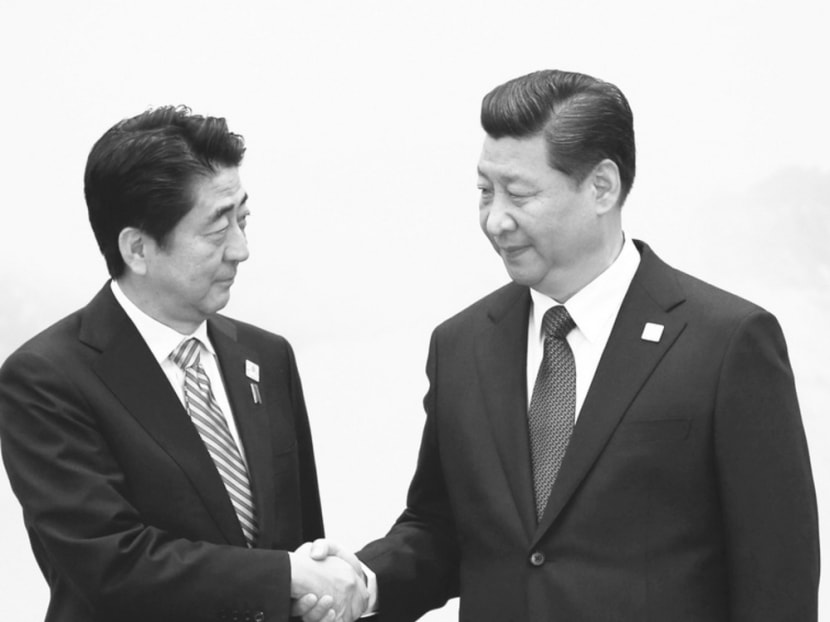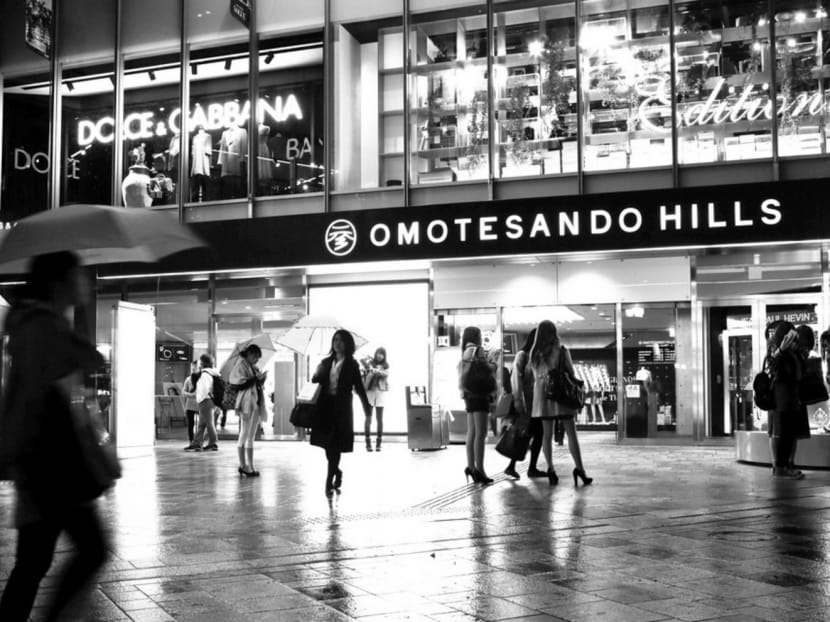‘Abe 2.0’ is a man on a mission, destination unclear
Such is the contrast between Mr Shinzo Abe’s lacklustre first term as Prime Minister and his supercharged, hyperactive performance this time around that the Japanese have taken to calling him “Abe 2.0”.


Such is the contrast between Mr Shinzo Abe’s lacklustre first term as Prime Minister and his supercharged, hyperactive performance this time around that the Japanese have taken to calling him “Abe 2.0”.
Since he made his political comeback almost two years ago, Mr Abe has been on a mission to erase all memory of his first, miserable 12-month stint, which ended in 2007. His determination to make amends has lent his premiership an almost born-again zeal, which supporters find invigorating and opponents frightening.
Economically, he has launched the most ambitious plan to revive the economy since it fell into stagnation two decades ago. Diplomatically, he has been more active than any Prime Minister since Mr Yasuhiro Nakasone in the 1980s, tramping around the region and the world. On defence, he has made the most concerted effort in decades to unshackle Japan from constitutional restraint and restore its position as a “normal nation” with a normal military.
The past two weeks have been frantic even by Mr Abe’s standards.
First, Mr Haruhiko Kuroda, Mr Abe’s radical appointee as central bank governor, wrong-footed markets by launching another round of massive monetary easing in the very week the United States Federal Reserve was going the other way. Just as the Bank of Japan said it was going to buy more government bonds, the country’s vast Government Pension Investment Fund said it would more than double its allocation to domestic equities. The coordinated policies had an immediate impact. Japanese equities have risen 7 per cent and the yen has fallen more than 5 per cent to ¥115 against the US dollar. Bond markets, in defiance of the Cassandras, have remained stable.
Second, this week, Mr Abe finally secured a meeting with Mr Xi Jinping, the Chinese leader whose first two years in office have been even more muscular than Mr Abe’s. There is no love lost between the two. During their much-photographed handshake, they held each other’s digits with all the warmth they might reserve for a dead fish.
Still, the encounter marked a pause to dangerously deteriorating relations. China’s press portrayed Mr Abe as begging for an audience and Mr Xi as magnanimously granting the little pipsqueak his wish. Yet Mr Abe can also credibly claim the meeting had taken place without his having had to make substantive concessions.
Third and, in a sense, most surprisingly, there is suddenly talk of Mr Abe calling a snap election. One possibility is that he may use the vote as an opportunity to back out of a further planned rise in the sales tax inherited from the previous government. Last week, he held a joint meeting with Mr Koichi Hamada, “the godfather of Abenomics”, and Mr Paul Krugman, the print-till-you-drop US economist, both of whom urged him to ditch the tax rise in the interest of banishing deflation once and for all.
An election could be one way of achieving that policy U-turn, though Mr Abe may still be genuinely undecided about whether to put up the tax or not. Another potential benefit would be to bolster his sagging — if still respectable — support rate by challenging voters to back him or sack him. A revved-up Mr Abe would milk a new mandate for all it is worth.
JAPAN’S UNCERTAIN FUTURE
So, where is all this leading? Economically, Japan has the best chance in a generation to end deflation, the root cause of many — if by no means, all — of its problems. Getting to 2 per cent inflation is a bit like Macbeth’s ambition to be king. Mr Abe is so steeped in quantitative and qualitative easing — or blood, as Shakespeare called it — that it would be as tedious to return as to go o’er.
Mr Hamada, the Yale professor who persuaded Mr Abe to take the plunge, gave the three arrows of monetary easing, fiscal flexibility and structural reform respective marks of “A”, “B” and “E”, which conveniently spell Mr Abe’s name. If Japan can get to sustainable, moderate inflation, half the battle would be won. Structural reform aimed at raising the potential growth rate could follow.
When it comes to Mr Abe’s aim of turning Japan into a “normal” nation, the results are likely to be less clear-cut. Countries such as the Philippines, Vietnam and India welcome a stronger Japan, which they see as a counterweight to China. Beijing, of course, does not see it that way, which is why it has branded Mr Abe as a dangerous militarist who might invade Asia all over again if given half the chance.
Mr Abe’s biggest obstacle, however, is domestic. Most voters remain cautious about his ambition to revise the Constitution, particularly when it comes to jettisoning the pacifist Article 9. Any such step would need to be ratified by a referendum, a hurdle it would almost certainly fail. However determined Abe 2.0 is, on that front, he may have to yield. THE FINANCIAL TIMES
ABOUT THE AUTHOR:
David Pilling is The Financial Times’ Asia editor.






